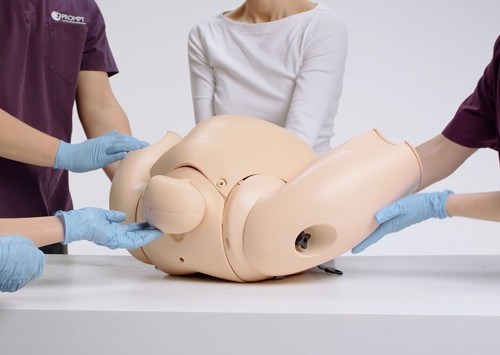Training to Prevent Erb’s Palsy; A Mission Close to Home
We hear from our PROMPT Flex Product Manager on what it's like to live with Erb's Palsy and how training for shoulder dystocia can improve new-born outcomes.

Creating simulation that allows for safe and reliable training is a mission that all of us at Limbs & Things stand by. For some, this mission hits close to home. Erb’s Palsy is a condition that can be prevented by training on models like our Birthing Simulator PROMPT Flex. This Erb’s Palsy Awareness Week, one of our Product Managers weighs in on his experience with the condition.
‘When I was born, I was one of the 1 in 150 babies who experienced shoulder dystocia during my birth. Unfortunately, this led to me suffering from a condition called Erb’s palsy.
One of the main causes of Erb’s palsy is improper management of Shoulder Dystocia and excessive fetal force which can cause damage to the brachial plexus (a group of five nerves that connect to the spinal cord and give movement and feeling to the shoulder and arm). Damage to the brachial plexus can cause weakening and paralysis of the arm and shoulder. Depending on the severity of the nerve damage the weakness and paralysis may last for days, months or life.
Erb’s Palsy is a life changing condition for the child and family. There are several surgical options available including nerve grafts & muscle releases (I have had a number of surgeries including subscapularis release, tendon and muscle graft’s, rotational surgery of the ulna). These can have a significant improvement of the strength and mobility of the arm. Even with the surgical treatments, weekly physio and occupational therapy can often be required in the child’s early years.

Whilst many make a full recovery a large proportion will be affected for life. For some this can have severe impact on their quality of life, it can make daily tasks such as: washing, cooking, driving, dressing, difficult and impossible for some.
Another side that is often forgotten about is the mental impact traumatic deliveries can have on parents. The stress, aftercare, and often perceived guilt from the birth can lead to postnatal PTSD and other mental health issues.
Despite everything people with Erb’s palsy embrace the condition and it forms an integral part of their life. It can afford people opportunities they wouldn’t normally have. I have competed for Great Britain in Paratriathlon something that I never would have thought possible!
I am now in the privileged position to be the PROMPT Flex Product Manager here at Limbs & Things and strive to help continue the fantastic work helping to reduce incidents of Erb’s Palsy and improving the quality of life for people worldwide.’
In several studies, training to manage shoulder dystocia using our Birthing Simulator PROMPT Flex was found to improve outcomes for new-borns[1][2][3]. Repeated training was found to result in sustained improvement of shoulder dystocia management[2] and led to a reduction in brachial Palsy injuries[1].
With promising findings like these, it is evident that reliable training for all relevant medical professionals is a key factor in reducing the number of babies born with Erb’s Palsy.
Want to know more? Watch the video on Erb's Palsy that we made in collaboration with Erb's Palsy Group.
[1] Draycott, T. J., J. F. Crofts, et al. (2008). "Improving Neonatal Outcome Through Practical Shoulder Dystocia Training." Obstet Gynecol 112(1): 14-20.
[2] Crofts, J. F., C. Bartlett, et al. (2007). "Management of Shoulder Dystocia: Skill Retention 6 and 12 Months After Training." Obstet Gynecol 110(5): 1069-1074.
[3] Crofts, J. F. A., Georgios; Read, Mike; Sibanda, Thabani; Draycott, Timothy J. (2005). "Shoulder dystocia training using a new birth training mannequin." BJOG: An International Journal of Obstetrics & Gynaecology 112(7): 997-999.
Did you like this article?
Share it on social media and remember to tag us!

